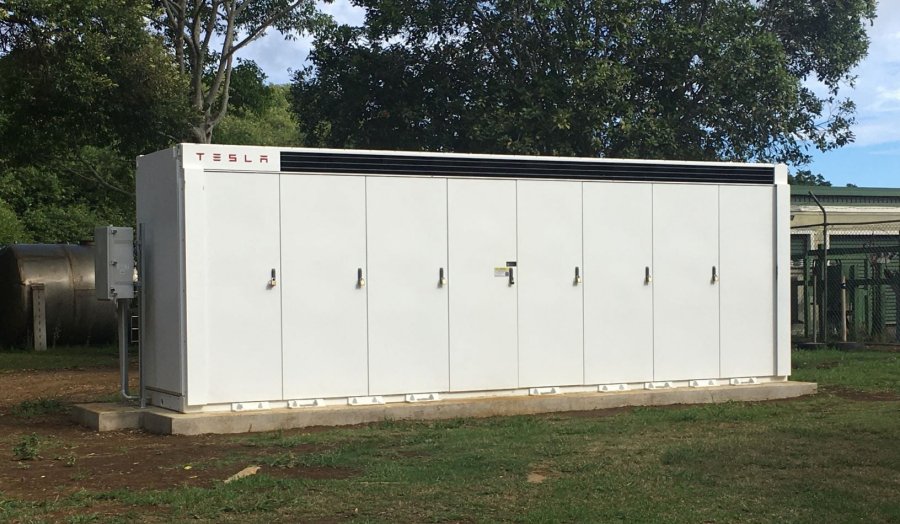
The Australian Federal Government has stepped in to give the folks on Norfolk Island some relief from their diesel-based electricity generation cost woes.
Norfolk Island is a tiny island (3,455 hectares) in the South Pacific Ocean. While an Australian Territory, it’s much closer to the Kiwis than us – approximately 1,400 kilometres directly east of Evans Head in NSW compared to around 760 kilometres from NZ’s Cape Reinga.
Like many island communities, Norfolk has traditionally relied on diesel for electricity generation. The community in the process of shifting entirely to much cheaper and cleaner renewable energy, but that transition can’t happen fast enough. With an increase of 40 per cent in diesel fuel prices in recent months driven by domestic and global freight challenges, fossil-fuel based electricity generation is getting even more expensive.
Last week, Federal Minister for Regional Development, Local Government and Territories Kristy McBain announced a $200,000 subsidy to help out as an interim measure.
“Having spent time on Norfolk Island, I understand the challenges the community is facing and want to support measures to alleviate cost of living pressures where possible.”
Electricity On Norfolk Island
Among Norfolk Island’s electricity generation and infrastructure assets:
- 6 x 1.0MW diesel generators.
- 4 x 750 kVA 415/6600 volt step-up transformers.
- 125 kW standby generator for powerhouse essentials, hospital and airport.
- A 2MW Tesla battery system for slurping up surplus solar energy.
- A 400 kW load bank for shedding excess power during peak periods of solar energy input.
- 44 km of high and 44 km of low voltage cabling.
- Distributed household rooftop PV systems.
There have been more than 555 small-scale solar power systems installed on Norfolk Island, with a collective capacity of 1,770 kW. That’s pretty impressive given its remoteness and a population of 1,849. But this uptake has also caused some headaches in managing Norfolk Island’s electricity network, with too much solar energy goodness generated at times. The Tesla battery system installed in December 2020 has helped out on that front.
There’s a rather unique approach to electricity charges on the island that make Time of Use (ToU) tariffs here on the mainland look simple by comparison. For the 2022/23 financial year (Source):
- Daily supply charge: $0.50
- PV access to grid daily charge: $0.25
- Consumption tariff when the diesel generators are in use: $0.72 kW/h
- Consumption tariff when the battery is supplying the island: $0.35 kW/h
- Consumption tariff when solar energy and the battery are supplying power: $0.20 kW/h
- Consumption tariff when solar energy is supplying power to the island and the surplus is charging the battery: $0.05 kW/h
- A negative tariff when there is more solar energy being generated than is required or can be absorbed by the Tesla battery: -$0.20 kW/h.
- As far as I can tell, there’s no feed-in tariff for solar owners.
The Australian Government is pitching in $5.3 million to improve Norfolk Island’s electricity network, including the rollout of more solar panels and supporting infrastructure to ensure electricity generation and demand are balanced. Norfolk Regional Council has set its sights on 100% renewables by 2024, introducing feed-in tariffs and reducing the highest consumption tariff of $0.72 per kilowatt-hour by at least half by that year.


 RSS - Posts
RSS - Posts



The Federal government caused this problem and we belong to England not a territory of Australia We do not belong to Australia it’s about time Australia admits that they have just invited Norfolk Island
As a resident of Norfolk Island, I can assure you my latest quarter year power bill dated 30/09/2022, does not reflect the charges detailed in this article. The current invoice meter reading is 746 units resulting in a charge of $537.12 or a flat 0.72 kW/h. I look forward to the day I see the reduced charges show on my invoices – next quarter perhaps ?
It would appear from the linked source quoted in the article that the flat 0.72 kWh charge applies for all old meters. It is not clear how meters are being replaced but you may want to enquire of the council if you are interested in getting the new reduced charges.
The property I have on the island is a fairly new build with a new meter. We are charged about $130 a quarter for a property that only feeds into the system. There is no engery credits ect. $30 meter reading fee then about $90-$100 for “other charges”. Have asked for a itemised bill, was told that was itemised. Asked what “other charges” were. Was told it’s because we have solar panels. Since the aus government gave them $200k to help, prices whent up further… I pay $300 a year for waste collection, a service not offered by the local council so I burn all my rubbish on my property. I pay over $1k a year in rates, for this I have a dirt road leading to my property, I don’t receive mail, I pay foe a post box in town. I have rain water and no sewerage access. So for living basicly completely off the grid I get to pay around $1.6k a year for no services rendered. Fairly sure that’s just stright theft. But seeing its the Australian government doing it, nothing I can do about it.ice to K ow they are Lieing about it to the rest of the world tho.
Apologies Michael, Dene, Glen, Adam and John – I just came across this blog and can help explain the changes occurring on Norfolk Island.
Everyone is currently paying 72c/kWh, and yes, because of the use of accumulation meters, those with solar effectively receive 72c/kWh when it offsets consumption in the same quarter (but no cash refunds are paid). Those with solar pay an additional fixed charge based on the size of their system.
Dynamic tariffs are being introduced that will lower electricity costs when diesel is not being consumed. The additional solar fixed charge is being removed. This is a good thing!! But it is dependent on time-of-use metering being installed which is taking longer than expected. It is the critical path activity.
The new tariffs are two-way – so they are also a feed-in-tariff!
The Federal Government funding is being used for meters across the island, and solar and battery solutions. With this investment being implemented this quarter, a clear pattern of lower electricity charges during sunshine hours will emerge.
Happy to answer direct questions.
I for one am very excited by the new tariffs, bring it on ??. Living on Norfolk Island we are familiar with things “taking longer”. Thank you Greg for the subtle link to https://www.besy.energy/norfolk-island/ . I did take the opportunity to sign up to Besy Energy, which proved very difficult – might just be me. The link I above does not appear to provide any way to set up a “My Account”. I tried my account number as the site suggests, but that did not work. Some how, I have not been able to repeat the process, I got to https://my.besy.energy/account/preferences/?meter=106 where the form requests Electricity retailer (Norfolk Island Electricity or Besy not available), location type, and Cents / KW/H – now I am stuck, unable to get past that screen – it just loops back as if I have made an mistake in my data entry. I did try selecting a retailer on the list, but still no further ahead. I guess I will just wait longer.
Glen